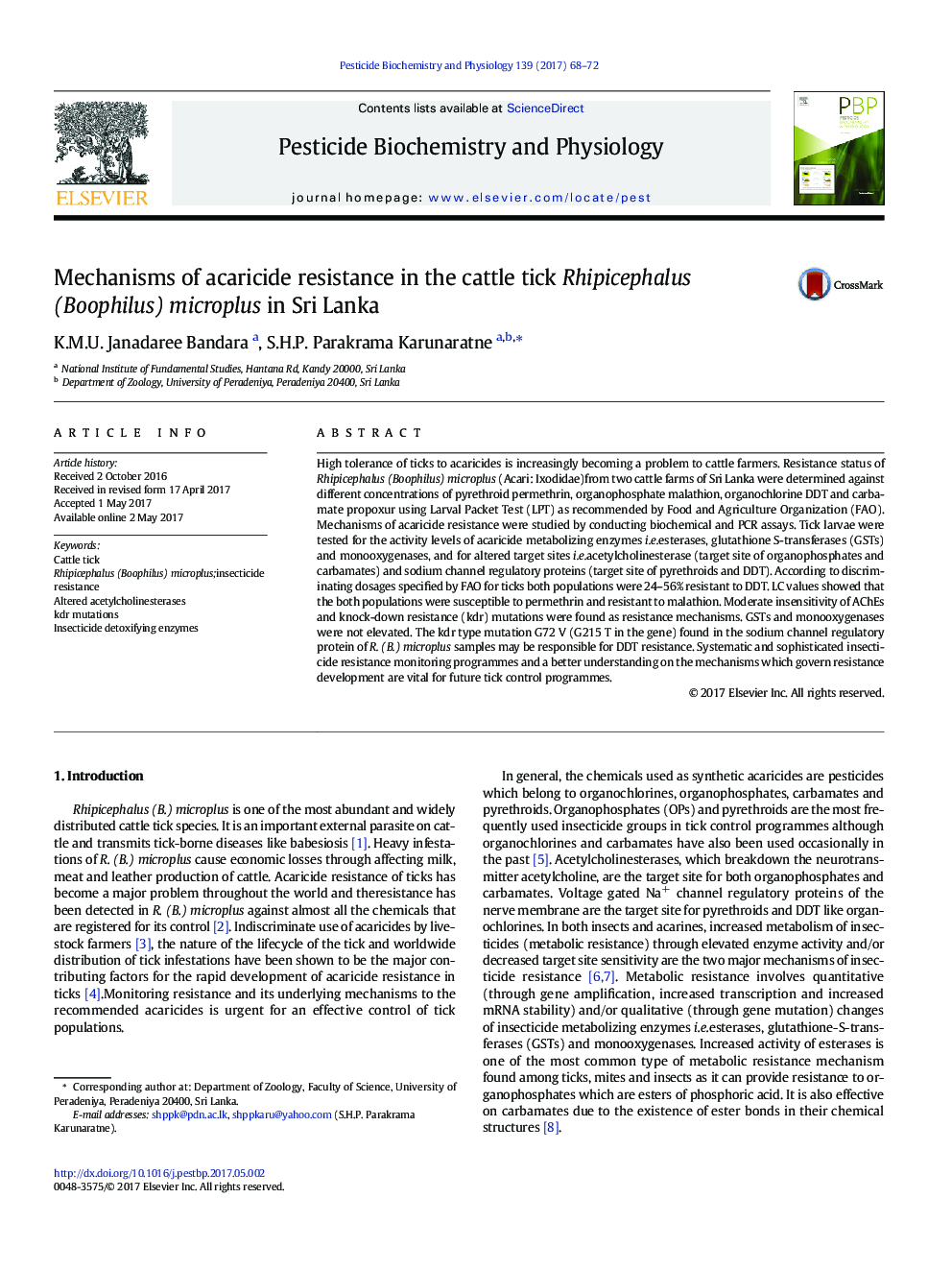| Article ID | Journal | Published Year | Pages | File Type |
|---|---|---|---|---|
| 5514842 | Pesticide Biochemistry and Physiology | 2017 | 5 Pages |
â¢Sri Lankan Rhipicephalus (B.) microplus is resistant to DDT, malathion and propoxurâ¢Tick populations are 'susceptible' to permethrinâ¢Organophosphorus and carbamate target site AChE is moderately insensitiveâ¢Knock-down resistance (kdr) gene mutation G215 T is presentâ¢Activity of the enzymes which provide metabolic resistance to acaricides are assessed for two Rhipicephalus (B.) microplus populations.
High tolerance of ticks to acaricides is increasingly becoming a problem to cattle farmers. Resistance status of Rhipicephalus (Boophilus) microplus (Acari: Ixodidae)from two cattle farms of Sri Lanka were determined against different concentrations of pyrethroid permethrin, organophosphate malathion, organochlorine DDT and carbamate propoxur using Larval Packet Test (LPT) as recommended by Food and Agriculture Organization (FAO). Mechanisms of acaricide resistance were studied by conducting biochemical and PCR assays. Tick larvae were tested for the activity levels of acaricide metabolizing enzymes i.e.esterases, glutathione S-transferases (GSTs) and monooxygenases, and for altered target sites i.e.acetylcholinesterase (target site of organophosphates and carbamates) and sodium channel regulatory proteins (target site of pyrethroids and DDT). According to discriminating dosages specified by FAO for ticks both populations were 24-56% resistant to DDT. LC values showed that the both populations were susceptible to permethrin and resistant to malathion. Moderate insensitivity of AChEs and knock-down resistance (kdr) mutations were found as resistance mechanisms. GSTs and monooxygenases were not elevated. The kdr type mutation G72Â V (G215Â T in the gene) found in the sodium channel regulatory protein of R. (B.) microplus samples may be responsible for DDT resistance. Systematic and sophisticated insecticide resistance monitoring programmes and a better understanding on the mechanisms which govern resistance development are vital for future tick control programmes.
Graphical abstractDownload high-res image (272KB)Download full-size image
